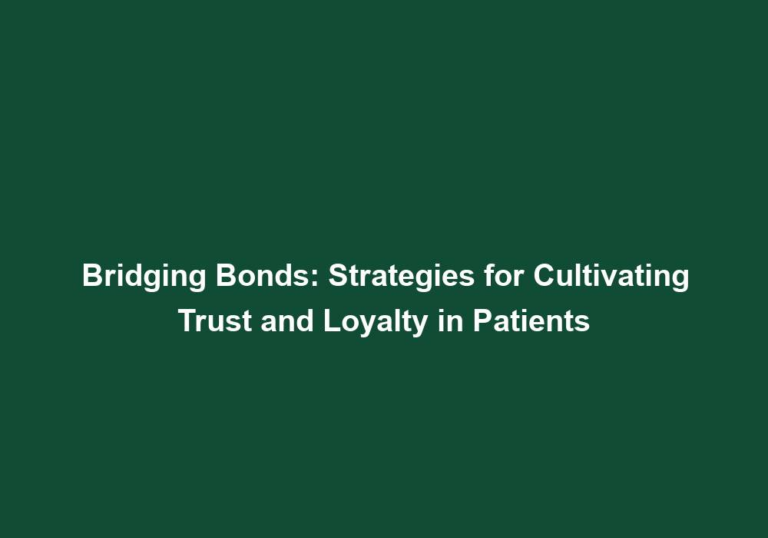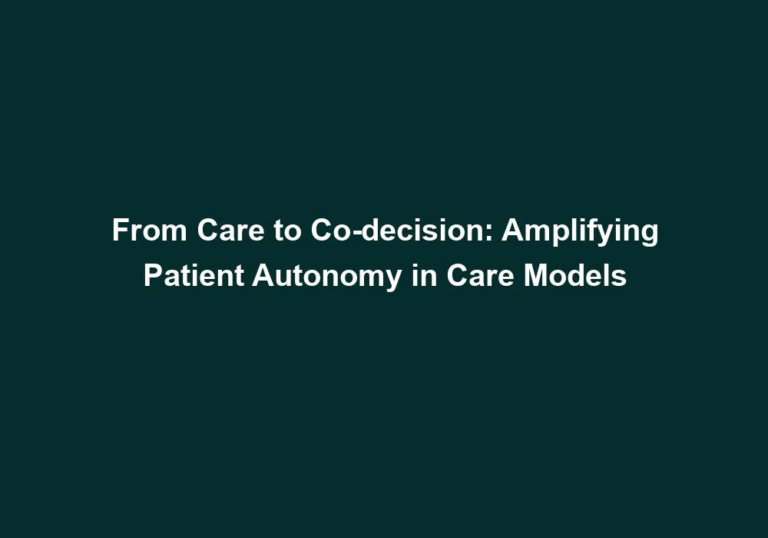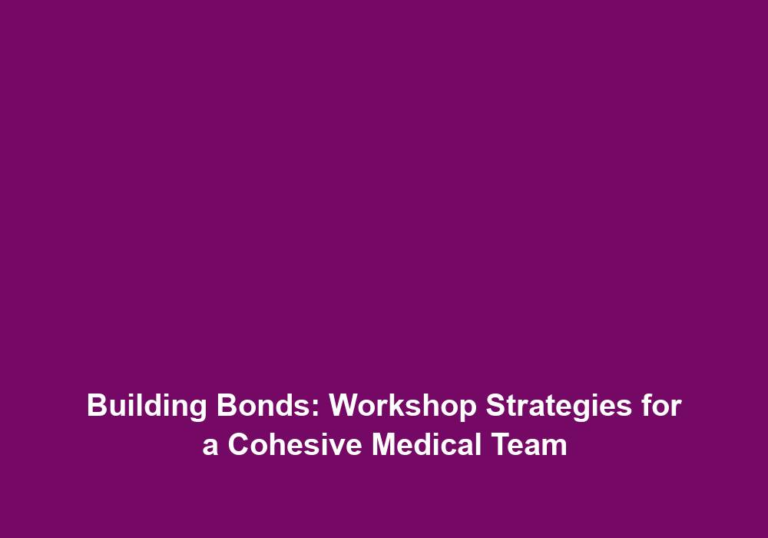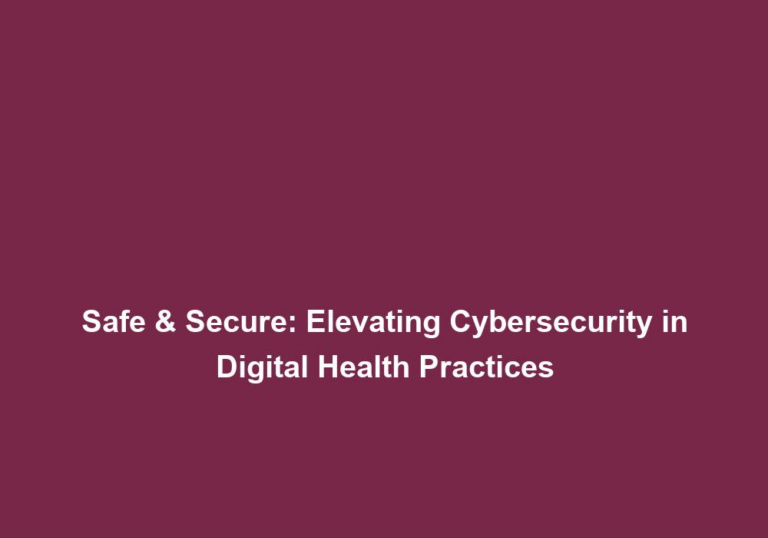Healing with Heart: Elevating the Patient Journey in Healthcare Management
In the ever-evolving landscape of healthcare management, the focus on patient-centric care has become paramount. It is no longer sufficient to simply provide medical treatment; healthcare organizations must strive to create an environment that fosters healing and promotes overall well-being. This is where the concept of healing with heart comes into play – an approach that places the patient’s journey at the center of healthcare management.
Understanding the Patient Journey
To truly elevate the patient journey, it is essential to have a comprehensive understanding of what it entails. The patient journey encompasses every step, from the initial contact with a healthcare provider to the post-treatment follow-up. By mapping out this journey, healthcare organizations can identify pain points, opportunities for improvement, and areas where personalized care can be enhanced.
Key Stages in the Patient Journey
-
Pre-Engagement: The pre-engagement stage is the patient’s initial contact with the healthcare provider, whether through a phone call, website inquiry, or referral. It is crucial to ensure a seamless and efficient process, providing clear information and prompt responses to inquiries. This can be achieved by implementing streamlined appointment scheduling systems, easy-to-navigate websites with informative content, and well-trained staff who can provide accurate information.
-
Engagement: Once a patient has engaged with a healthcare provider, the focus shifts to building a strong rapport and trust. This involves effective communication, empathetic listening, and providing transparent information about treatment options, procedures, and potential outcomes. Healthcare organizations can enhance engagement by training their staff in effective communication techniques, such as active listening and clear explanations of medical terms. They can also provide educational materials and resources to empower patients to make informed decisions about their care.
-
Treatment: The treatment stage is where the actual medical interventions take place. It is essential to create an environment that promotes healing, emphasizing patient comfort, safety, and dignity. This includes well-designed facilities, skilled healthcare professionals, and the effective use of technology to streamline processes. Healthcare organizations can ensure patient comfort by providing amenities such as private rooms, comfortable beds, and access to entertainment options. They can also leverage technology to automate administrative tasks, reducing wait times and improving efficiency.
-
Recovery: After treatment, patients enter the recovery phase. This stage is crucial for monitoring progress, managing any side effects or complications, and providing appropriate support and resources for rehabilitation and recovery. Healthcare organizations can support patient recovery by offering personalized care plans, including physical therapy, dietary guidance, and emotional support. They can also provide resources such as support groups or online communities where patients can connect with others going through similar experiences.
-
Follow-up: The patient journey does not end with treatment and recovery. Healthcare organizations must establish effective follow-up procedures to ensure ongoing care, monitor long-term outcomes, and address any concerns or questions that may arise. This can be achieved through regular check-ins, either in-person or remotely, to assess the patient’s progress and address any issues that may arise. It is essential to maintain open lines of communication and provide resources for continued support, such as educational materials or access to healthcare professionals.
The Role of Healing with Heart in Healthcare Management
Healing with heart is a philosophy that aims to humanize the healthcare experience, placing the patient’s emotional well-being at the forefront. By incorporating this approach into healthcare management, organizations can improve patient satisfaction, enhance outcomes, and build long-lasting relationships with patients.
Benefits of Healing with Heart
-
Enhanced Patient Experience: When patients feel that their emotional and psychological needs are met, they are more likely to have a positive experience throughout their healthcare journey. This fosters trust, reduces anxiety, and promotes better overall well-being. Healthcare organizations can enhance the patient experience by training their staff in empathy and compassionate care, implementing patient feedback mechanisms, and creating a welcoming and supportive environment.
-
Improved Patient Outcomes: Research has shown that a patient’s emotional state can significantly impact their physical healing. By prioritizing the emotional well-being of patients, healthcare organizations can contribute to better treatment outcomes and faster recoveries. This can be achieved by providing emotional support, counseling services, and resources for stress management and coping strategies.
-
Increased Patient Engagement: When patients feel heard, understood, and valued, they become active participants in their own care. They are more likely to adhere to treatment plans, engage in preventive measures, and take ownership of their health. Healthcare organizations can promote patient engagement by involving patients in shared decision-making, providing education and resources for self-management, and offering opportunities for patients to provide feedback and actively participate in their care.
Strategies for Implementing Healing with Heart
To effectively implement the concept of healing with heart, healthcare organizations can consider the following strategies:
-
Empathy Training: Healthcare professionals should undergo training that focuses on developing empathy and effective communication skills. This enables them to connect with patients on a deeper level, listen actively, and respond compassionately to their concerns. Training programs can include role-playing exercises, case studies, and workshops on effective communication techniques.
-
Designing Patient-Centered Spaces: Creating healing environments involves more than just functional facilities. Thoughtful design elements, such as comfortable waiting areas, calming colors, and natural lighting, can positively impact patients’ emotional well-being. Healthcare organizations can work with architects and interior designers to create spaces that promote relaxation, privacy, and a sense of calm.
-
Utilizing Technology: Technology can play a significant role in enhancing the patient journey. From electronic medical records that facilitate seamless information sharing to telemedicine platforms that allow for remote consultations, the effective use of technology can improve access to care and streamline processes. Healthcare organizations can invest in user-friendly technology solutions that enhance communication, provide convenient access to healthcare professionals, and enable patients to actively participate in their care.
-
Personalized Care Plans: Each patient is unique, and their care should reflect that. By tailoring treatment plans and providing individualized support, healthcare organizations can address patients’ specific needs and preferences. This can be achieved through comprehensive assessments, shared decision-making, and ongoing communication with patients to ensure their care aligns with their goals and values.
-
Collaborative Care: Healing with heart requires a multidisciplinary approach. Healthcare professionals from various disciplines should collaborate and coordinate care to ensure a holistic and seamless experience for patients. This can involve regular interdisciplinary team meetings, shared electronic medical records, and clear communication channels to facilitate collaboration and information sharing.
Key Considerations for Healthcare Management
While embracing healing with heart, healthcare management must also address certain challenges and considerations:
-
Resource Allocation: Implementing patient-centric strategies requires adequate resources, both financial and human. Healthcare organizations must allocate resources effectively to support training, technology adoption, and the creation of patient-centered spaces. This may involve budget reallocation, grant applications, or partnerships with external organizations to secure the necessary resources.
-
Data Privacy and Security: As healthcare becomes increasingly digitized, maintaining patient data privacy and security is of utmost importance. Healthcare organizations must ensure robust security measures and comply with relevant privacy regulations. This can involve implementing secure data storage systems, training staff on data privacy protocols, and regularly auditing security practices to identify and address vulnerabilities.
-
Continuous Improvement: Healthcare management should strive for continuous improvement by regularly evaluating patient feedback, monitoring outcomes, and identifying areas for growth and enhancement. This can be achieved through patient satisfaction surveys, clinical audits, and quality improvement initiatives. Healthcare organizations should foster a culture of learning and innovation, where feedback is valued, and opportunities for improvement are actively sought.
By embracing the concept of healing with heart, healthcare management can transform the patient journey and create an environment that truly prioritizes the overall well-being of patients. This patient-centric approach has the potential to revolutionize healthcare and elevate the quality of care provided.







